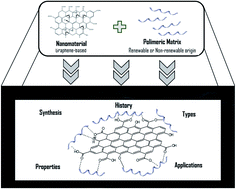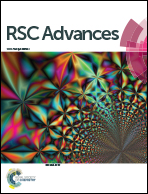Nanocomposites based on the graphene family for food packaging: historical perspective, preparation methods, and properties
Abstract
Nanotechnology experienced a great technological advance after the discovery of the graphene family (graphene – Gr, graphene oxide – GO, and reduced graphene oxide-rGO). Based on the excellent properties of these materials, it is possible to develop novel polymeric nanocomposites for several applications in our daily routine. One of the most prominent applications is for food packaging, offering nanocomposites with improved thermal, mechanical, anti-microbial, and barrier properties against gas and water vapor. This paper reviewed food packaging from its inception to the present day, with the development of more resistant and intelligent packaging. Herein, the most common combinations of polymeric matrices (derived from non-renewable and renewable sources) with Gr, GO, and rGO and their typical preparation methods are presented. Besides, the interactions present in these nanocomposites will be discussed in detail, and their final properties will be thoroughly analyzed as a function of the preparation technique and graphene family-matrix combinations.



 Please wait while we load your content...
Please wait while we load your content...